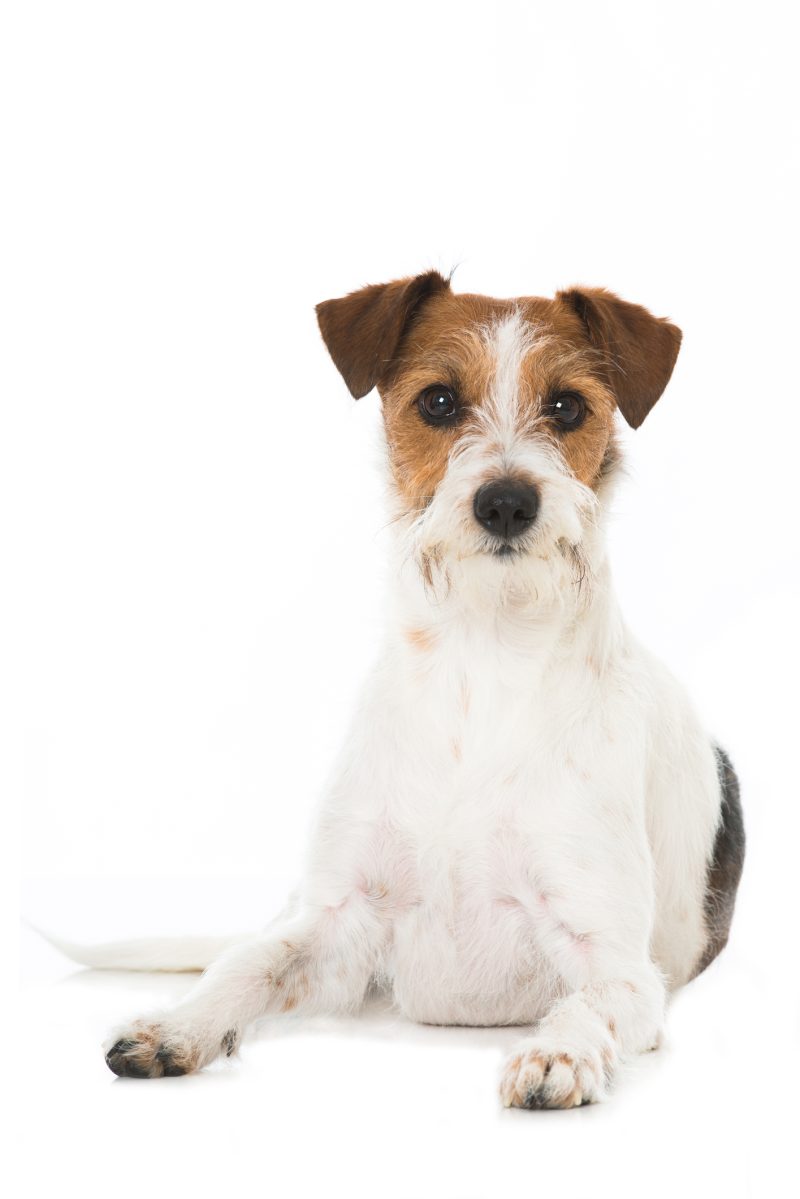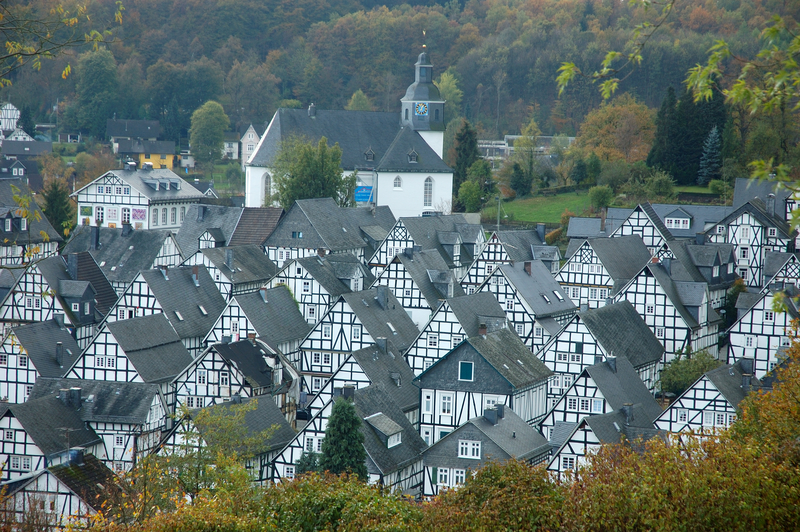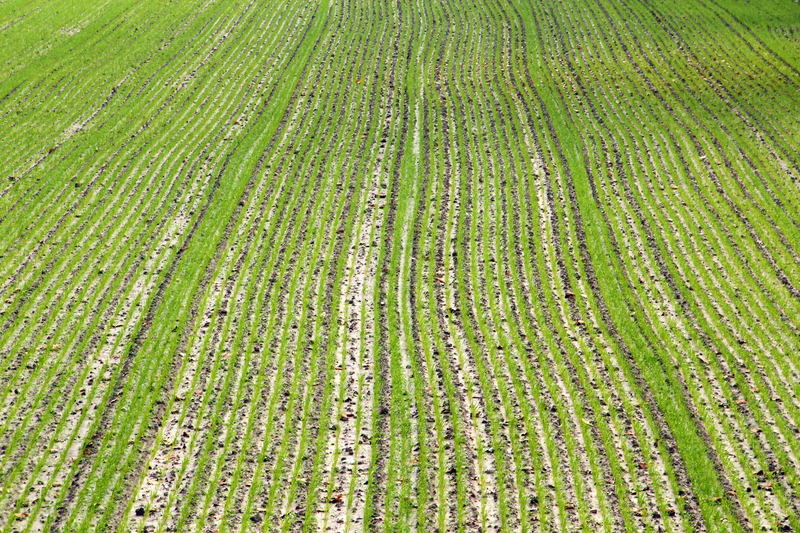
Visitors to historic Freudenberg, a town located in the Siegerland region in Germany, immediately notice the timber-framed houses made possible by an abundance of timber resources in the area. Exposed wooden beams and plastered walls are characteristic of many structures in Siegerland towns and villages, but they weren’t just aesthetically appealing; these houses were designed to withstand the region’s climate, the timber frames providing structural stability, the plaster infill effectively insulating against the elements.

Photo by © Typhoonski | Dreamstime
The Siegerland region of western Germany was also known for a unique way of farming done historically with non-reversible ploughs. To be more descriptive, this was a “ridge and furrow” ploughing system used since medieval times. Horse-drawn plows (or later, tractors) created parallel ridges and troughs in the soil by ploughing the same strip of land each year.

Photo of ridge and furrow system by © Giuseppe Di Paolo/Dreamstime
We know you’re dying for specifics.
See, traditional ploughs had a cutting blade that could turn the soil over only to the right. This meant that the plough couldn’t return along the same line for the next furrow. Instead, it went in a clockwise direction, and after ploughing one long side, the plough was removed from the ground, moved across the unploughed land to the other side, and was put back in to work back down that long side. The process gradually moved the soil towards the center line of each strip over many years of ploughing the same strips, and this eventually built up ridges in the center of each strip leaving lower furrows between the ridges.
This resulted in a pattern of crooked or curved furrows in the fields known locally as “Krumme Furche” or “Krom Fohr,” or in modern German, “crooked furrow,” and it came to refer to the area.
